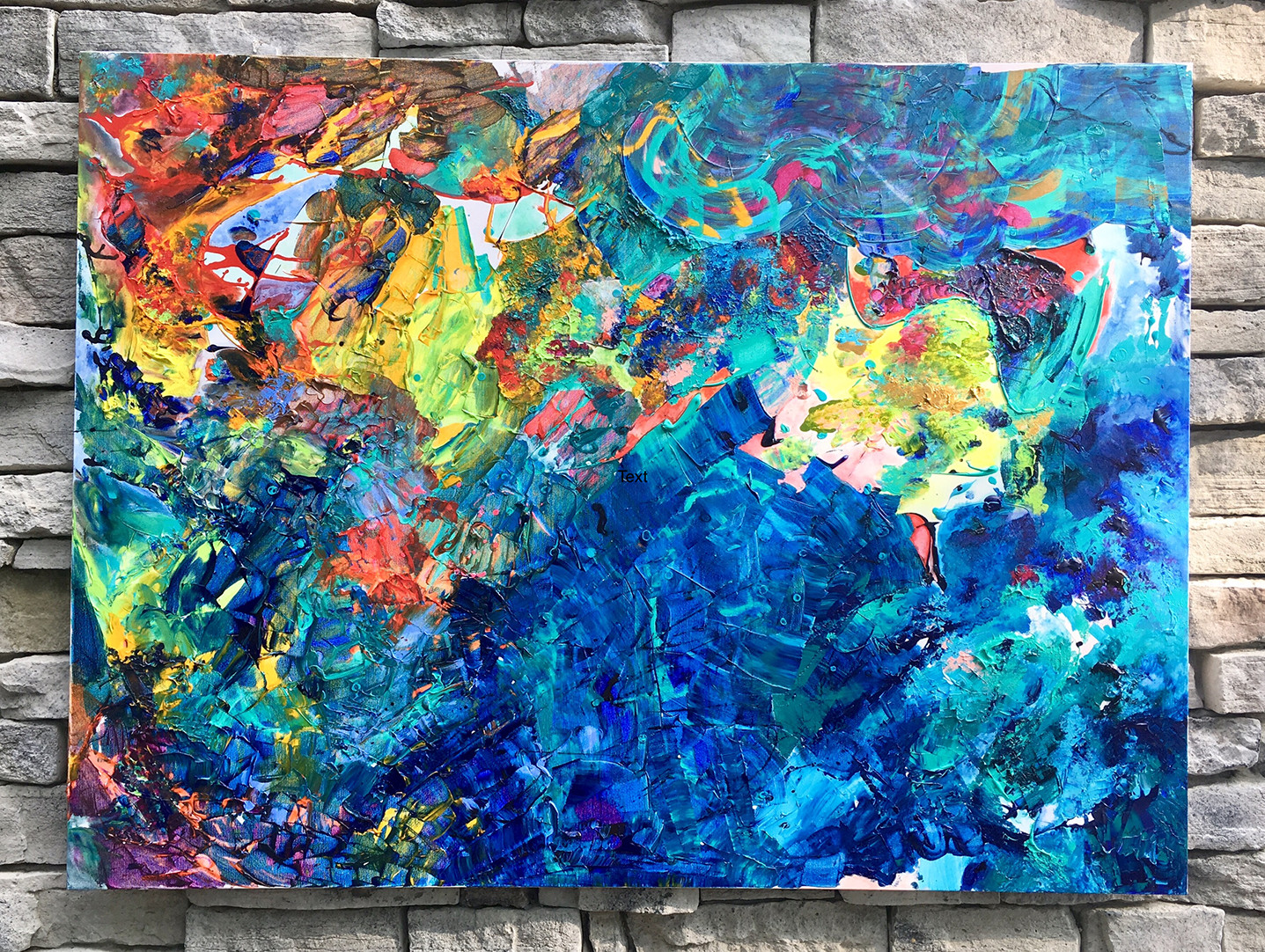A sense of urgency takes hold. I quickly collect my art supplies. I lay them out and dollop varying blues, coral pinks, and yellow greens directly onto the canvas until there are only a few white spaces. I take the palette knife and begin to spread the colors in different directions. Tropical oceans and brilliant summer splendors emerge into my consciousness. Patterns dance from my heart and course through my arm, hands, and fingers onto the canvas. I enter a place where there is no time or space, only a quiet yet blissful stillness. As I feel close to finished, the quietness is replaced by the critic’s mind: "When to stop? What if I mess up?" I become tense, yearning for someone else’s opinion or to hear "STOP." I then remember to become consciously aware of my subtle breath, feel my bodily sensations, center into my truth, and create space between my thoughts and my inner being. I begin to accept not knowing when to stop or making a mistake. If I’m not able to transform my "mistake" into beauty, I could accept the joy I received from the process and not just the end result. I continue to paint and practice loving kindness until I feel a sense of gratitude or until it ceases to be magical and tiredness tells me to stop.
At times, we may turn to our easels and use our paintbrush as a tool to give expression to anxiety or sadness. We can transform panic or pain into liberating strokes and loosen the grip of identifying with our mental health ailments. In fact, a study has shown that visual art production affects the brain’s default mode network and, therefore, has an impact on stress resistance and psychological resilience (
1). Through painting, we can appreciate our ever-changing states as they translate into color and form. We begin to learn to observe these states without judging or identifying with them. We can learn to be with the present and immerse ourselves into the profundity of our spirit. In this wisdom, the gifts of creativity and imagination emerge and flow from suffering, looking within, and the ebb and flow of life.
Painting can be used as a form of meditation. While painting, we can ask the question, "Who is painting?" The answer may be related to our social roles, the institutions to which we belong, our traits, or our values. As we dive deeper, we may begin to identify with our intrinsic intelligence, the mystery of the unknown, or the feeling of expansiveness. Our anxieties begin to pacify, and we may relax, using our breath to enter a meditative state. Similarly, Shambhavi Mahamudra kriya, a daily 21-minute yogic practice that includes deep breathing and meditation techniques, has shown a reduction in perceived stress and higher levels of general well-being (
2). Creating art from our mental and emotional states can serve as a moving meditation to connect the body, mind, and spirit.

